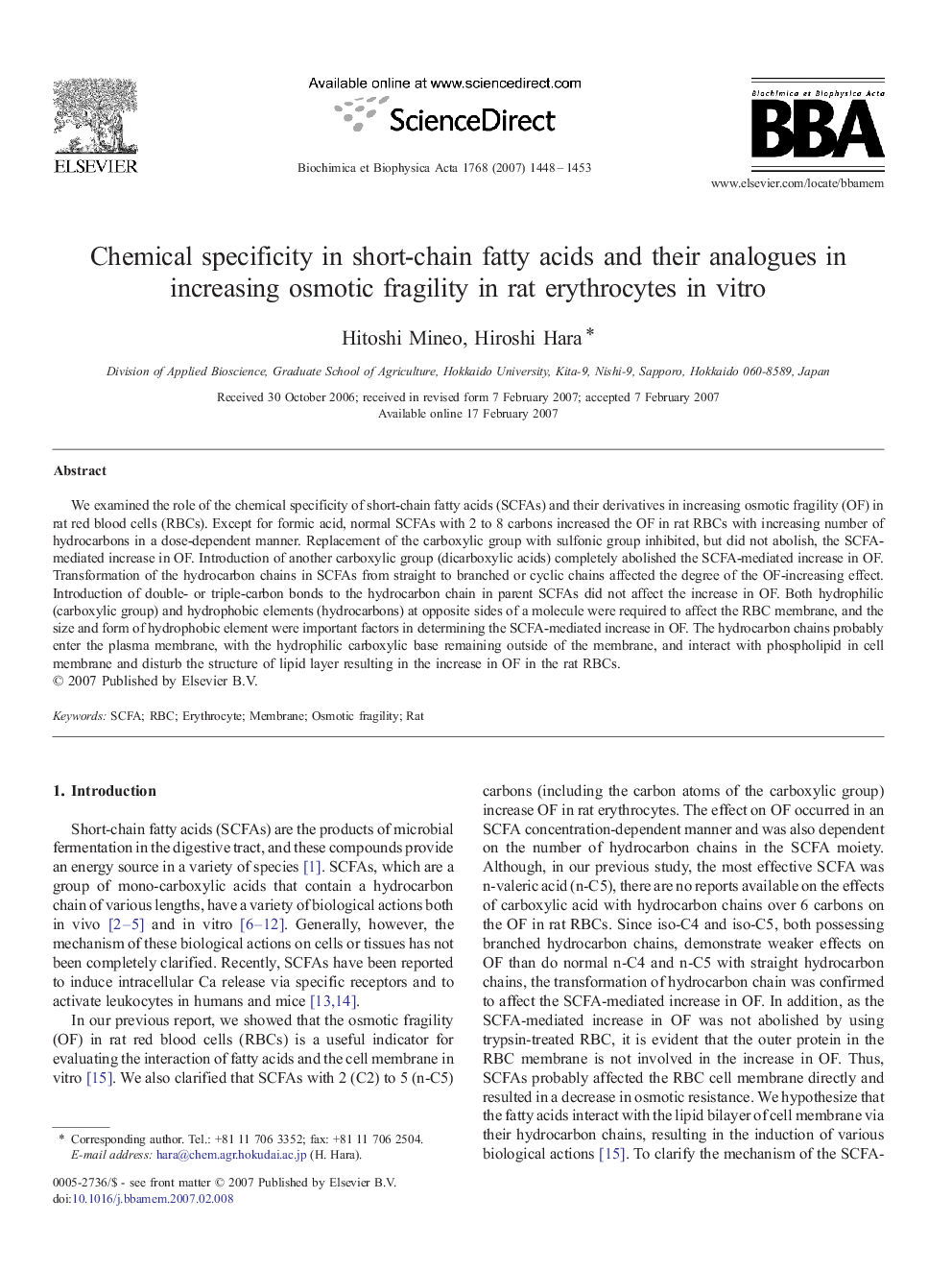| Article ID | Journal | Published Year | Pages | File Type |
|---|---|---|---|---|
| 1945891 | Biochimica et Biophysica Acta (BBA) - Biomembranes | 2007 | 6 Pages |
We examined the role of the chemical specificity of short-chain fatty acids (SCFAs) and their derivatives in increasing osmotic fragility (OF) in rat red blood cells (RBCs). Except for formic acid, normal SCFAs with 2 to 8 carbons increased the OF in rat RBCs with increasing number of hydrocarbons in a dose-dependent manner. Replacement of the carboxylic group with sulfonic group inhibited, but did not abolish, the SCFA-mediated increase in OF. Introduction of another carboxylic group (dicarboxylic acids) completely abolished the SCFA-mediated increase in OF. Transformation of the hydrocarbon chains in SCFAs from straight to branched or cyclic chains affected the degree of the OF-increasing effect. Introduction of double- or triple-carbon bonds to the hydrocarbon chain in parent SCFAs did not affect the increase in OF. Both hydrophilic (carboxylic group) and hydrophobic elements (hydrocarbons) at opposite sides of a molecule were required to affect the RBC membrane, and the size and form of hydrophobic element were important factors in determining the SCFA-mediated increase in OF. The hydrocarbon chains probably enter the plasma membrane, with the hydrophilic carboxylic base remaining outside of the membrane, and interact with phospholipid in cell membrane and disturb the structure of lipid layer resulting in the increase in OF in the rat RBCs.
